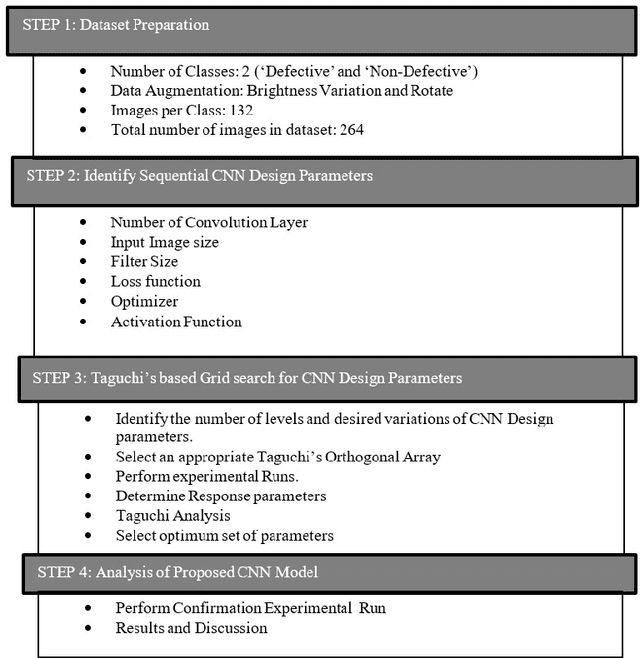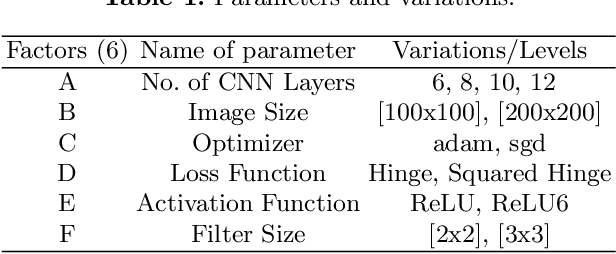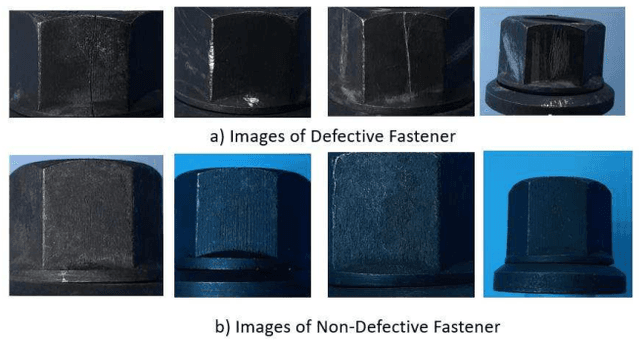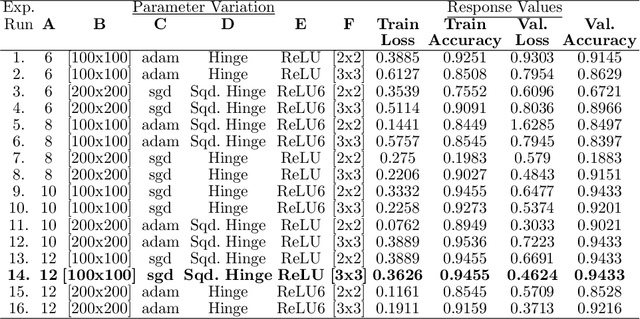Taguchi based Design of Sequential Convolution Neural Network for Classification of Defective Fasteners
Paper and Code
Jul 22, 2022



Fasteners play a critical role in securing various parts of machinery. Deformations such as dents, cracks, and scratches on the surface of fasteners are caused by material properties and incorrect handling of equipment during production processes. As a result, quality control is required to ensure safe and reliable operations. The existing defect inspection method relies on manual examination, which consumes a significant amount of time, money, and other resources; also, accuracy cannot be guaranteed due to human error. Automatic defect detection systems have proven impactful over the manual inspection technique for defect analysis. However, computational techniques such as convolutional neural networks (CNN) and deep learning-based approaches are evolutionary methods. By carefully selecting the design parameter values, the full potential of CNN can be realised. Using Taguchi-based design of experiments and analysis, an attempt has been made to develop a robust automatic system in this study. The dataset used to train the system has been created manually for M14 size nuts having two labeled classes: Defective and Non-defective. There are a total of 264 images in the dataset. The proposed sequential CNN comes up with a 96.3% validation accuracy, 0.277 validation loss at 0.001 learning rate.
 Add to Chrome
Add to Chrome Add to Firefox
Add to Firefox Add to Edge
Add to Edge